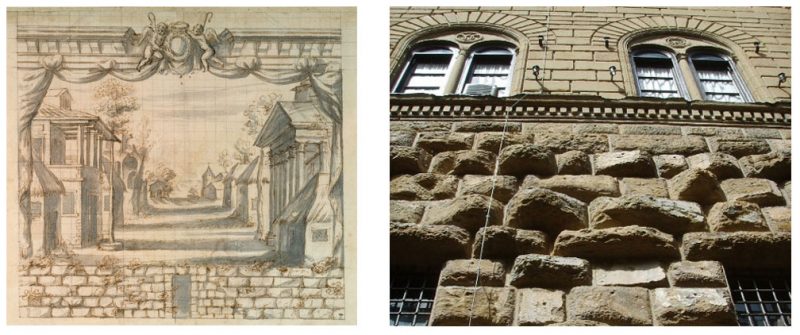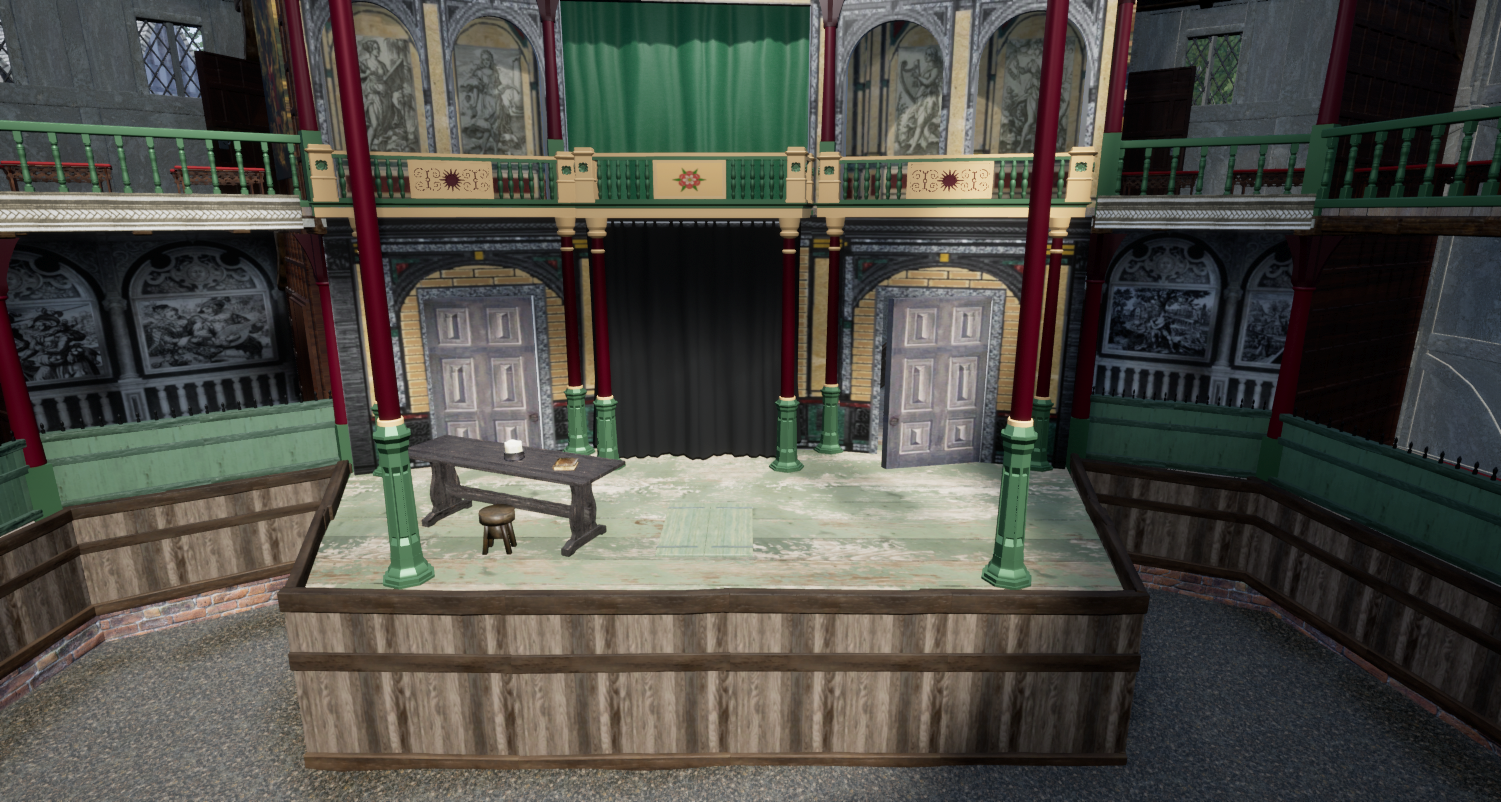Ronayne explains that the sub-stage level is symbolically below ground (below the earthly plane represented by the stage), perhaps in the grotesque world into which the dead descend and out of which ghosts and devils appear (through the trap door).303 In speculating about the possible design of the interior of Tudor playhouses such as the Globe, Ronayne suggests that the sides of the stage may have been painted to represent heavy rusticated masonry, reminiscent of grottos and caves and popular in the period as demonstrated in Inigo Jones’ stage design for Artenice (c. 1625).

In the Phase II model, as the stage is representative of the plane of the earth, the sub-stage and lower gallery walls have been left the natural brown of wood to suggest ‘below ground.’
[303] Ronayne, ‘Totus Mundus Agit Histrionem,’ 132-133.
